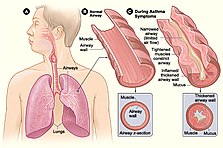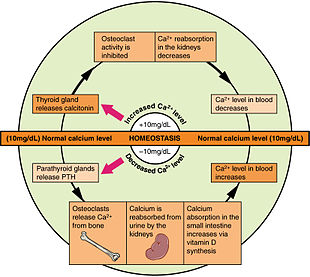We're for all- ALL are for us for the greater interest of Humanism-Truth-Facts-Friendship-Unity-Participation including Physico-Mental Sound Health with Spirituality enrichment through ''TOTAL HEALTH SOLUTION'' to a Well-furnished GOALofTruth alloted for all in real sense ;
From wikipedia & other reliable sources ( Poets, Writers, Thinkers, Researchers, Free Lancers, Philosophers, Theologists, Scientists, Orators, Sociologists and Photographers +Artists-Musicians & etc.) we can learn as follows :
Plz fill the under quoted "Primary Patient Form" for most urgent Ideal Curative Medical Care & Services to Gain your Former Sound Health by the 500%proved +Accurate Innovative Healing TOOLS.... without Conditional "DEATH-RISKS

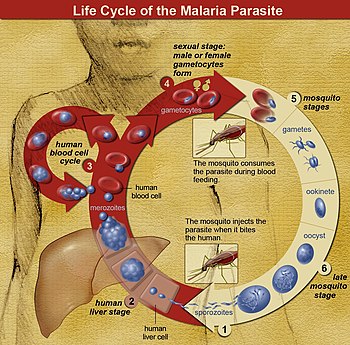
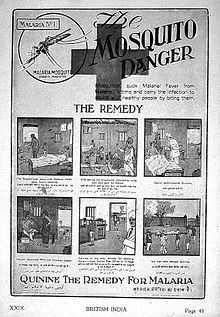
Malaria has several serious complications, including the development of respiratory distress, which occurs in up to 25% of adults and 40% of children with severe P. falciparum malaria. Possible causes include respiratory compensation of metabolic acidosis, noncardiogenic pulmonary oedema, concomitant pneumonia, and severe anaemia. Although rare in young children with severe malaria, acute respiratory distress syndrome occurs in 5–25% of adults and up to 29% of pregnant women.[37] Coinfection of HIV with malaria increases mortality.[38] Kidney failure is a feature of blackwater fever, where haemoglobin from lysed red blood cells leaks into the urine.[32]
World Malaria Day 2024: "Accelerating the fight against malaria for a more equitable world",[14]
- World Malaria Day 2023: “Time to deliver zero malaria: invest, innovate, implement”[15]
- World Malaria Day 2022: "Harness innovation to reduce the malaria disease burden and save lives."[16]
- World Malaria Day 2019-2020-2021: "Zero malaria starts with me"[17]
- World Malaria Day 2018: "Ready to beat malaria"
- World Malaria Day 2017: "LETS Close The Gap"
- World Malaria Day 2016: "End Malaria For Good"[18][19][20]
- World Malaria Day 2013-2014-2015: "Invest in the future: defeat malaria"[21]
- World Malaria Day 2012: "Sustain Gains, Save Lives: Invest in Malaria"[22]
- World Malaria Day 2011: "Achieving Progress and Impact"[23]
- World Malaria Day 2009-2010: "Counting malaria out"[24]
- World Malaria Day 2008: "Malaria: a disease without borders"[25]
''Malaria is a mosquito-borne infectious disease that affects humans and other animals.[5][6][3] Malaria causes symptoms that typically include fever, tiredness, vomiting, and headaches.[1][7] In severe cases, it can cause jaundice, seizures, coma, or death.[1] Symptoms usually begin ten to fifteen days after being bitten by an infected mosquito.[3] If not properly treated, people may have recurrences of the disease months later.[3] In those who have recently survived an infection, reinfection usually causes milder symptoms.[1] This partial resistance disappears over months to years if the person has no continuing exposure to malaria.[1]
Malaria is caused by single-celled microorganisms of the Plasmodium group.[3] It is spread exclusively through bites of infected Anopheles mosquitoes.[3][8] The mosquito bite introduces the parasites from the mosquito's saliva into a person's blood.[3] The parasites travel to the liver where they mature and reproduce.[1] Five species of Plasmodium can infect and be spread by humans.[1] Most deaths are caused by P. falciparum, whereas P. vivax, P. ovale, and P. malariae generally cause a milder form of malaria.[1][3] The species P. knowlesi rarely causes disease in humans.[3] Malaria is typically diagnosed by the microscopic examination of blood using blood films, or with antigen-based rapid diagnostic tests.[1] Methods that use the polymerase chain reaction to detect the parasite's DNA have been developed, but they are not widely used in areas where malaria is common, due to their cost and complexity.[9]
The risk of disease can be reduced by preventing mosquito bites through the use of mosquito nets and insect repellents or with mosquito-control measures such as spraying insecticides and draining standing water.[1] Several medications are available to prevent malaria for travellers in areas where the disease is common.[3] Occasional doses of the combination medication sulfadoxine/pyrimethamine are recommended in infants and after the first trimester of pregnancy in areas with high rates of malaria.[3] As of 2020, there is one vaccine which has been shown to reduce the risk of malaria by about 40% in children in Africa.[10][11] A pre-print study of another vaccine has shown 77% vaccine efficacy, but this study has not yet passed peer review.[needs update][12] Efforts to develop more effective vaccines are ongoing.[11] The recommended treatment for malaria is a combination of antimalarial medications that includes artemisinin.[13][14][1][3] The second medication may be either mefloquine, lumefantrine, or sulfadoxine/pyrimethamine.[15] Quinine, along with doxycycline, may be used if artemisinin is not available.[15] It is recommended that in areas where the disease is common, malaria is confirmed if possible before treatment is started due to concerns of increasing drug resistance.[3] Resistance among the parasites has developed to several antimalarial medications; for example, chloroquine-resistant P. falciparum has spread to most malarial areas, and resistance to artemisinin has become a problem in some parts of Southeast Asia.[3]
The disease is widespread in the tropical and subtropical regions that exist in a broad band around the equator.[16][1] This includes much of sub-Saharan Africa, Asia, and Latin America.[3] In 2020 there were 241 million cases of malaria worldwide resulting in an estimated 627,000 deaths. Approximately 95% of the cases and deaths occurred in sub-Saharan Africa. Rates of disease have decreased from 2010 to 2014 but increased from 2015 to 2020.[4] Malaria is commonly associated with poverty and has a significant negative effect on economic development.[17][18] In Africa, it is estimated to result in losses of US$12 billion a year due to increased healthcare costs, lost ability to work, and adverse effects on tourism

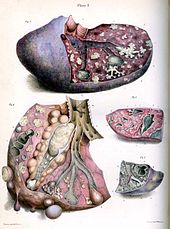
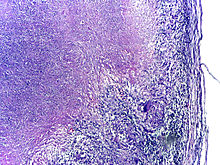
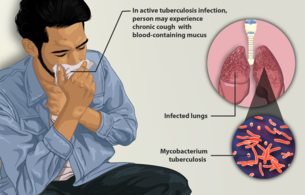
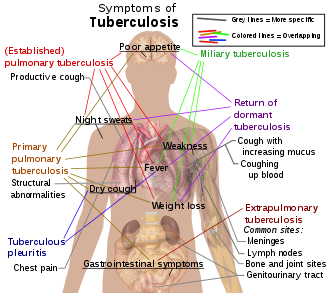
Tuberculosis (TB) is caused by a group of closely related Gram-positive bacilli, collectively known as the Mycobacterium tuberculosis complex (MTBC). MTBC comprises the typical human pathogens M. tuberculosis and Mycobacterium africanum, as well as variants affecting various animal species.
1997: Use DOTS more widely![16]
- 1998: DOTS success stories
- 1999: Stop TB, use DOTS
- 2000: Forging new partnerships to Stop TB
- 2001: DOTS: TB cure for all
- 2002: Stop TB, fight poverty
- 2003: DOTS cured me – it will cure you too!
- 2004: Every breath counts – Stop TB now!
- 2005: Frontline TB care providers: Heroes in the fight against TB
- 2006: Actions for life – Towards a world free of TB
- 2007: TB anywhere is TB everywhere
- 2008–2009: I am stopping TB
- 2010: Innovate to accelerate action
- 2011: Transforming the fight towards elimination
- 2012: Call for a world free of TB
- 2013: Stop TB in my lifetime
- 2014: Reach the three million: A TB test, treatment and cure for all
- 2015: Gear up to end TB
- 2016: Unite to End TB
- 2017: Unite to End TB
- 2018: Wanted: Leaders for a TB-free world
- 2019: It's time
- 2020: It's time to end TB!
- 2021: The clock is ticking
- 2022: Invest to end TB. Save Lives
- 2023-2024: Yes! We can end TB!
Tuberculosis (TB) is an infectious disease usually caused by Mycobacterium tuberculosis (MTB) bacteria.[1] Tuberculosis generally affects the lungs, but it can also affect other parts of the body.[1] Most infections show no symptoms, in which case it is known as latent tuberculosis.[1] Around 10% of latent infections progress to active disease which, if left untreated, kill about half of those affected.[1] Typical symptoms of active TB are chronic cough with blood-containing mucus, fever, night sweats, and weight loss.[1] It was historically referred to as consumption due to the weight loss associated with the disease.[8] Infection of other organs can cause a wide range of symptoms.[9]
Tuberculosis is spread from one person to the next through the air when people who have active TB in their lungs cough, spit, speak, or sneeze.[1][10] People with Latent TB do not spread the disease.[1] Active infection occurs more often in people with HIV/AIDS and in those who smoke.[1] Diagnosis of active TB is based on chest X-rays, as well as microscopic examination and culture of body fluids.[11] Diagnosis of Latent TB relies on the tuberculin skin test (TST) or blood tests.[11]
Prevention of TB involves screening those at high risk, early detection and treatment of cases, and vaccination with the bacillus Calmette-Guérin (BCG) vaccine.[3][4][5] Those at high risk include household, workplace, and social contacts of people with active TB.[4] Treatment requires the use of multiple antibiotics over a long period of time.[1] Antibiotic resistance is a growing problem with increasing rates of multiple drug-resistant tuberculosis (MDR-TB).[1]
In 2018, one quarter of the world's population was thought to have a latent infection of TB.[6] New infections occur in about 1% of the population each year.[12] In 2020, an estimated 10 million people developed active TB, resulting in 1.5 million deaths, making it the second leading cause of death from an infectious disease after COVID-19.[13] As of 2018, most TB cases occurred in the regions of South-East Asia (44%), Africa (24%), and the Western Pacific (18%), with more than 50% of cases being diagnosed in seven countries: India (27%), China (9%), Indonesia (8%), the Philippines (6%), Pakistan (6%), Nigeria (4%), and Bangladesh (4%).[14] By 2021 the number of new cases each year was decreasing by around 2% annually.[13][1] About 80% of people in many Asian and African countries test positive while 5–10% of people in the United States population test positive via the tuberculin test.[15] Tuberculosis has been present in humans since ancient times''
We're for all- ALL are for us for the greater interest of Humanism-Truth-Facts-Friendship-Unity-Participation to a Well-furnished GOAL of Truth from which all shall have ++++;
We're indebted to WIKIPEDIA +WHO for a short while and as 'Guardian QUOTATION' from Global WISER ONE. And have quoted many images, article's, writings etc. by great & humanist writers+++ from global thinkers, Well-wishers, Wiseman, Humanists and Others Living-Nonlivings in favor of HUMANISM to share more answers of Researchers-readers+++++....
To reach the 'GOAL of FULFILNESS' unitedly to alive in the "DESTINATION of TRUTH-FACTS-CHARMEST AMICABLITY" of Natural Joyful POSSIBILITIES+++
BREAST CANCER, TUMOR, Arsenic+Chemical Poisoning, Corona, Heart-Lung diseases, Neurological-Hormonal-Immunal-Infectious diseases with related complexities are possible to cure properly-easily-scientifically-accurately (100%) by our positive medical services only with+++++balance confirming
Medicine-Food control-proper nursing-medicinal massage-Medicinal Yogas- Meditation, Physiotherapy special etc. without side effects & Repeatation as per contract through user-friendly approved ways of CURE++++. please fill our form as below or click:
After confirming contract-letter between you+++. We serve you properly with no Chemo-therapy-radiation therapy -SURGICAL Complexities (Physical-Mental) to CURE+++ upto our Limit to recover your both-health from illness.


















